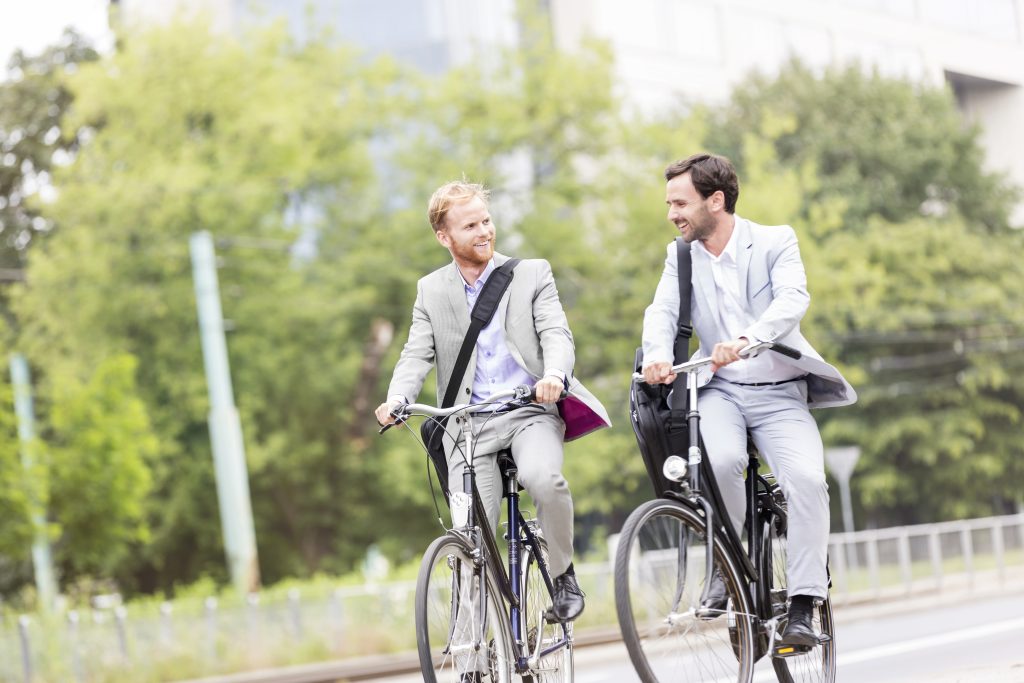What grinds my gears?
By Lookout on Jul 21, 2018 with Comments 0
We’re our own worst enemy!
SLt M.X. Déry – Contributor
In this series of commentaries on bicycle safety, I want to address issues that cyclists face every day from motorists, pedestrians and even other cyclists. Most of what I will write about has happened to me personally and are things that constantly grind my gears.
I’ll be speaking with subject matter experts to back up my complaints and perhaps after I have vented my spleen, cycling to work will be safer for everyone.
Sharing the road with motor vehicles and pedestrians is difficult as a cyclist, but the hardest obstacles to deal with are fellow cyclists. Pedestrians mostly stay on the sidewalks where bicycles are prohibited, and the ubiquity of bike lanes means interactions with motor vehicles can be limited, but other cyclists are unavoidable.
When speaking with local police, the top infractions by cyclists are failure to stop at red lights and stop signs, failure to signal, and failure to wear the appropriate safety equipment.
I see it all the time on my bike. A fellow cyclist will burn through a stop sign as if it wasn’t there or ignore a traffic light because there are no cars that they can see. I’ve seen pedestrians jump out of the way because they expected a cyclist to stop, and I’ve almost been hit while on my bike for the same reason.
This is due to cyclists not understanding they are vehicles under the BC Motor Vehicle Act (BCMVA), required to obey all traffic signs. Ignorance of this fact won’t save them from a ticket when on base. Military Police (MP) are empowered to issue tickets under the BCMVA on DND property. That infraction will run them $167.
Going the wrong way down a one-way street, such as near the Chiefs’ and Petty Officers’ mess is another example. I see this occur almost daily, especially at the end of the day. There is a sidewalk and if a rider dismounts, they become a pedestrian, but riding a bike through that area is akin to driving a car down a one-way street.
This is also true of failing to signal. I often follow a cyclist for a few hundred meters as they weave to the right and left while pedaling, and then violently exit the bike lane without indicating. That move could cost as much as $368.
I rarely see people riding without helmets, but I often see pairs or small groups riding side by side. Whether in the bike lanes or trails, riding side by side is hazardous. These leisurely riders rarely go quickly, preferring conversation to transportation, thus forcing actual cyclists to pass them.
In a bike lane, this can mean making a bold alteration out of the lane and deep into the vehicle lane. Bluetooth headsets exist if you want to talk more than you want to ride.
A minor annoyance for me is bike parking. There could be more in some areas, since we are required to secure our bike, but locking a bike on gates and fences around base is not allowed in the Base Standing Orders,. Unsecured bikes are to be collected and brought to the MPs, but that does not mean that cyclist should leave their bike locks dangling on the bike racks, as if they were reserving a spot.
The most dangerous action to take on a bicycle is the same as behind the wheel of a car: impaired driving. A bicycle is not an alternative to a car once you’ve had a few too many. Even though you don’t need a licence for an e-bike, a drunk cyclist could face a roadside suspension, since it is a motorized vehicle.
The long and short of it is, you shouldn’t act any differently on a bike then you would in a car. Stop at red lights and stop signs.
Filed Under: Top Stories
About the Author:






